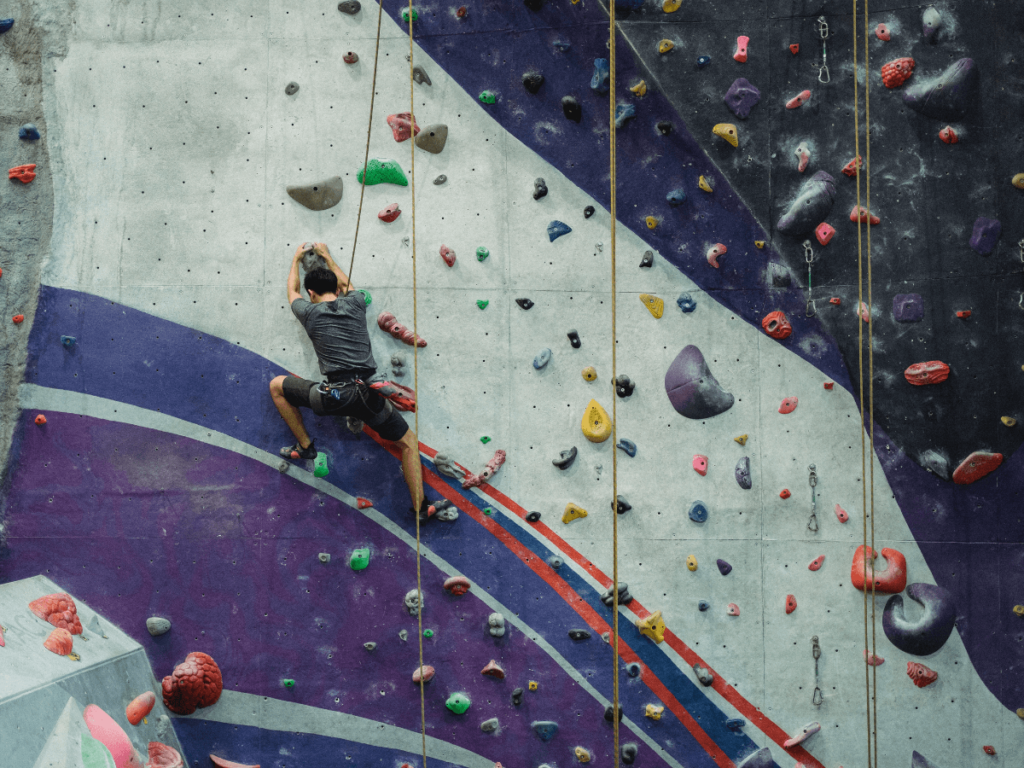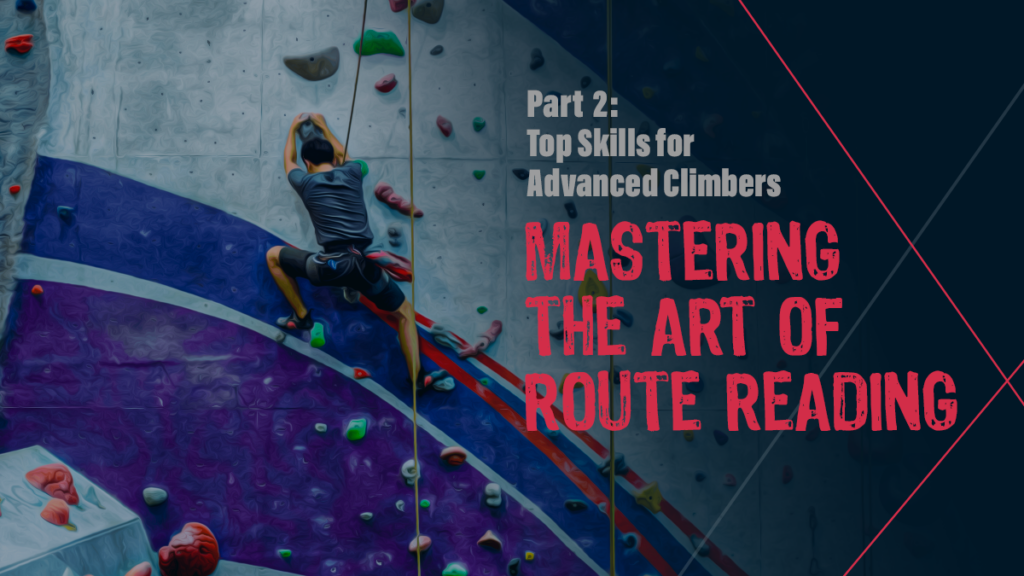We are back with part two of the three-part Top Skills for Advanced Climbers series! Previously you delved into proprioception and coordination. If you haven’t read that article yet, you should do that now, as we will build upon the concepts in this part and part three!
So what’s route reading? It is looking at the climb you are attempting before getting on the wall and painting a mental picture of how you will complete the climb at a move-by-move level. Effective route reading is a tricky skill to master. Still, if you break it down into the five steps outlined below and approach it with intention, you’ll find it as easy as reading the News on your phone.
Route Reading
Route reading is a skill that increases a climber’s efficiency and will contribute to their proprioception on the wall. Route reading should be done before beginning a climb and is much more than looking at the holds on the first half of the climbing and waving your hands in the air as if to mimic climbing.

To effectively route read, the climber completes a five-step mental process.
1. Identify the hand hold and types and foot holds on a route.
This includes knowing whether the holds are pinches, crimps, or slopey crimps. This may mean watching video footage of a climb (if outdoor climbing) or asking other climbers (if not attempting to on-sight) whether a hold that looks like a crimp is slopey or flat. This is also a good opportunity to look for sneaky, hidden holds!
2. Understanding how to use the identified hand-holds and foot-holds.
Knowing that the route or problem has x, y, and z types of hold is essential, but next, you must understand how to grab and use the holds. This ties back to our discussion on proprioception. While route reading on the ground doesn’t place you in the situation, having prior experience moving your body through space using pinches versus underclings versus slopers is beneficial. What is your body going to look like in between the holds? Will your hips be open or facing to the side? How extended will your legs be? How high do your feet need to be to reach the next hold?
3. Identifying places to rest.
This applies to sport climbing, but it may be helpful if you need to re-chalk the boulder problem is longer. If you can correctly identify good rest spots, you will save energy and be able to regroup on the wall.
4. Recognizing hand and hold order correlation.
After piecing together the hold types on the wall and how you’ll use each hold, it is vital to understand which rocks (or plastic climbing holds) you’ll grab with your left hand and which you’ll grab with your right hand. Advanced climbers tend to combine this with step 2 intuitively. Still, it pays to understand the distinction when developing your route reading skills. Also, it is equally important to recognize where you’ll place your left versus your right foot. The more instances you have to switch feet on the wall, the more energy you’ll waste.
5. Memorizing hand-hold order (and which hand) and foot-hold order (and which feet)
The final piece of effective route-reading is to commit the entire (yes, not just the first third) route or boulder problem to memory. Think about the last project you completed–you were likely able to climb at your physical limit by committing the route to memory/with as little wasted energy. It should not be rote memorization of holds but how you’ll position your body at each hold.
A great way to challenge yourself and progress in your route reading abilities is to climb various routes and boulder problems. Even if you love crimps, seek out routes or boulders with pinches, slopes, toe hooks, heel hooks, mantles, and coordination moves. Exposing yourself to a greater variety of holds, setting styles, and movements increases your route reading database, making it easier to pull information over time.
If you have any questions about route-reading that we didn’t answer or feedback, let us know in the comments below! Also, let us know if you’re following along on our series and if you’re enjoying it!

